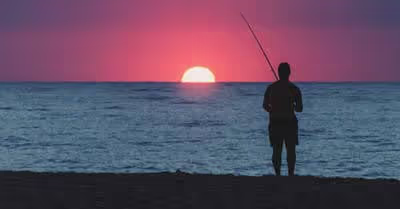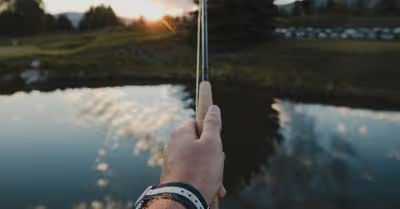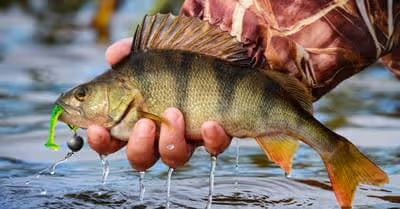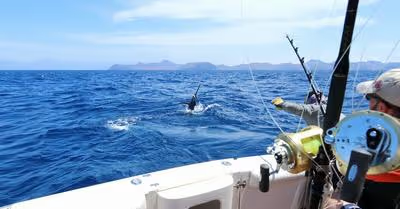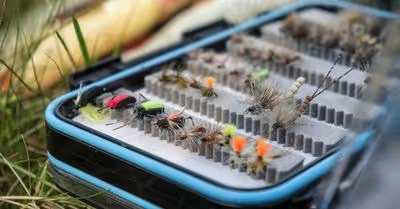Table of Contents
What is a Bottom Bouncer?
In simplest terms, a bottom bouncer is a simple piece of wire or a sinker that’s designed in an L shape that has a weight and a snap swivel attached. It is typically used to troll or drift both artificial and natural baits in depths ranging between 10 to 35+ feet.
Setting up a bottom bouncer is very simple. All you have to do is attach the main fishing line to the center of the bouncer where the two arms conjoin with a snap swivel. The leader line should hold the bait before it’s attached to the snap pivot on the bouncer with a barrel pivot. The main aim of using a bottom bouncer is to present the lures just above the surface of the bottom where they cannot be snagged. In other words, the bottom bouncer keeps the bait in an elevated position just at the right height for the walleyes or your target fish species.
The Items You’ll Need to Effectively Use a Bottom Bouncer
Here are the items you’ll need.
- Bottom bouncers
- Fishing rod
- Fishing reel
- Fishing line
- Snap swivels/pivots
- Bait
- Snelled hooks
Setting Up a Bottom Bouncer
You should, of course, assemble your fishing rod, reel, and line. Keep in mind that the most appropriate fishing line to use when using a bottom bouncer should have between 10 and 15 pounds test line.
Using an improved clinch knot (as we discussed in fishing knots), tie your fishing line to the bottom bouncer. Make sure that you have an ounce of weight for every 10 ft. of depth you’re planning to be fishing at. For example, use a bottom bouncer weighing an ounce to fish at 10 feet, a bottom bouncer weighing 2 ounces to fish at 20-feet depth and so on. That being said, you should use a bottom bouncer weighing 3 ounces or more to fish at depths exceeding 20 feet.
You should then tie a snap swivel to the bottom bouncer by threading the eye of the snap swivel through the wire portion of the bottom bouncer. You should then tie the snelled hook to the snap swivel by stringing the snap swivel’s wire through the loop on the snelled hook. Make sure that the monofilament line used to attach the snelled hook on the bottom bouncer doesn’t exceed three feet.
Finally, pierce your preferred lure to the snelled hook and let your bottom bouncer do the rest.
So How Do You Use a Bottom Bouncer?
Now that you’ve set up your bottom bouncer, it’s time to go and catch some walleyes. Here’s what you should do.
There’s a reason why bottom bouncers are generally described as bottom ticklers. Well, make sure that you suspend your bottom bouncer vertically to tickle just along the bottom. The main reason behind this is that walleyes do not spend their whole life at the bottom. You should, therefore, suspend your bait just off the bottom and directly in their face.
Some anglers often perceive the use of bottom bouncers to be boring. Well, this is because they’ve not grasped the intricacies of this unique technique. When using a bottom bouncer, it’s vital to understand the relationship between your boat’s speed, your target’s depth, the bouncer weight, and your line’s diameter.
You should always keep in mind that a bottom bouncer is designed for slow fishing while in close contact with the bottom. For this reason, the boat should move at a slower speed unless you’re prepared to use a heavier bottom bouncer. Without that, your bottom bouncer will take a horizontal orientation instead of a vertical orientation and that’s a recipe for failure. In short, having your boat at a high speed will make your fishing line tight by pulling it forward. This will cause friction on your line and the bottom bouncer will rise off the bottom and it won’t work perfectly. Similarly, you should use a line with a thinner to eliminate drag and ensure that your bottom bouncer hits the bottom.
Another important thing when using a bottom bouncer is the type of fishing rod and reel that you use. Simply put, baitcasting rods and reels are the ideal options if you want to perfectly use a bottom bouncer. Consider using a fishing rod measuring between 7 and 9 ft. long. Similarly, the baitcasting reel should weigh between 10 and 12 pounds. When it comes to the fishing line, a monofilament line is the most ideal.
It’s also important to keep in mind that your bottom bouncer should not hit the bottom if you are fishing in a place with a lot of rock, trees, weeds, and bushes. This is of great importance if you want to avoid snagging in the obstacles. The best way to do this is by reeling up your fishing line just a little and you’ll be safe to go. One of the coolest things when it comes to using a bottom bouncer is that they’re easy to master and use. Whether you’re a novice or an experienced angler, a bottom bouncer is effective to use in areas where your line and bait would otherwise be snagged if you used other fishing techniques. So if you’re looking to catch fish in rocky and snagged up areas, the bottom bouncer would be the ideal way to go.
Recent Articles



